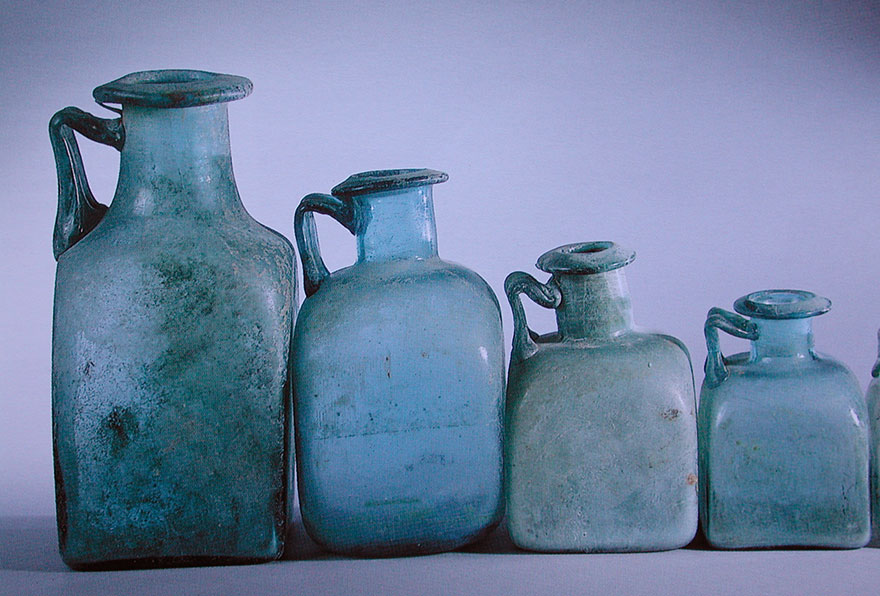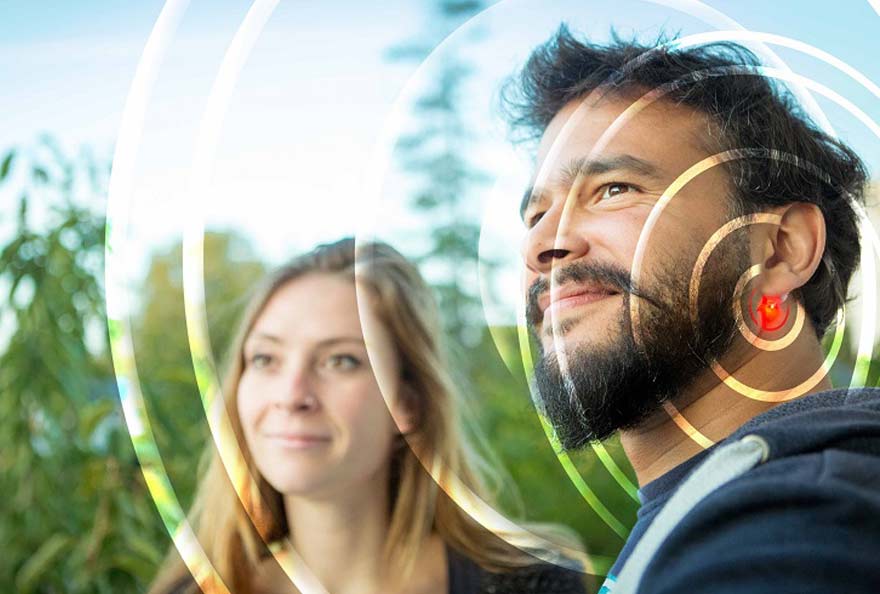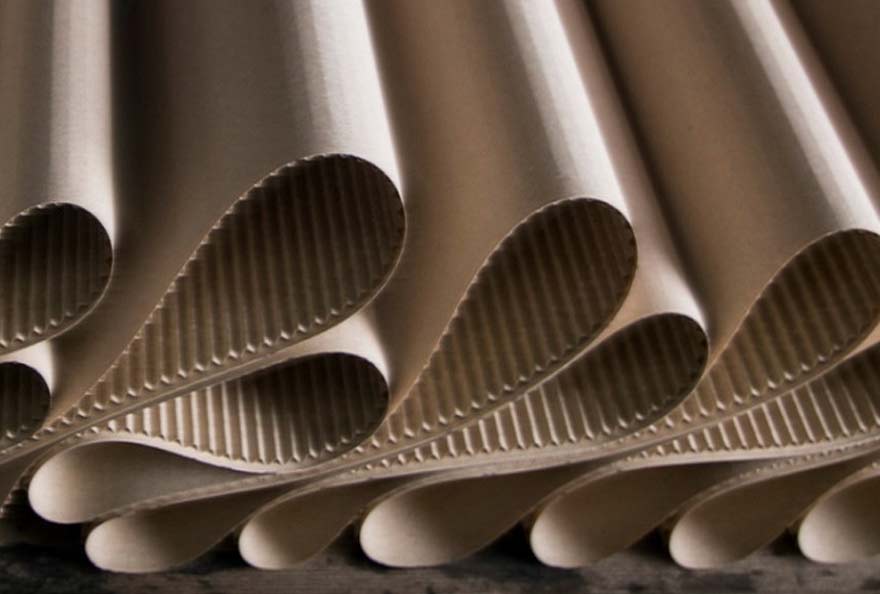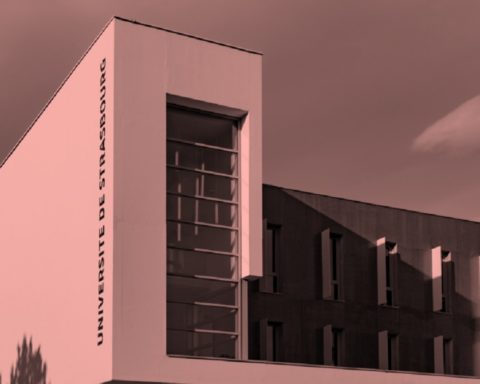Our insatiable thirst for curiosity naturally attracts us to the most prestigious archaeological sites and to visually sensational contexts, for example a monumental tomb with deceased accompanied by a rich metal material. However, in archaeology, it is sometimes very discreet clues, even invisible to the naked eye, that provide information that can renew our knowledge.
Ainsi, the blog of the World "In the footsteps of archaeologists. Excavations in the lab" was theecho on August 17 of an apparently modest but in fact exceptional archaeological discovery: bees and beehive products preserved thanks to a fire in an Etruscan settlement on the Po plain in Italy.
The archaeology of the products of the hive is a little developed field of research because of the small amount of data preserved until now.
If beeswax is revealed thanks to biomolecular analyses, honey and mead largely escape us, except for a few rare attestations allowed by palynology (the study of pollens preserved in archaeological strata).
On the site of Forcello, where archaeologists discovered bees and hive products, the practices of Etruscan beekeepers were exceptionally preserved thanks to a violent fire at the end of the 6th century BC.e s. B.C. (circa 500). A high quality honey was extracted from it but also a special product, bee bread (bee bread) with great nutritional and therapeutic qualities. The results of archaeobotanical studies made on the Italian site and published in the Journal of Archaeological Science are of great scientific importance because they reveal what has usually disappeared through natural decay.
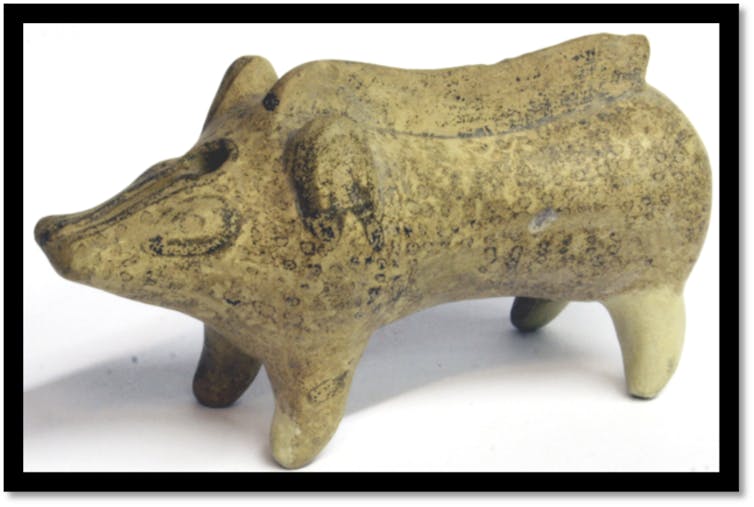
Etruscan perfume vase in the shape of a boar. VIIᵉ century B.C. Cerveteri Museum (Italy)
An archaeology of biology
We are in the field of organic archaeology, that is to say archaeology relating to the manufacture of food, medicinal and cosmetic products from mainly organic materials. Honey and beeswax belong to these categories of biological substances widely used by our ancestors for a wide variety of uses, including the manufacture of cosmetic and medicinal products.
The Université Bretagne Sud has piloted two international research programmes (Perhamo and Magi), laureates of the National Research Agency for the archaeology of biological products and more particularly the knowledge of perfumed and medicinal substances in Greek, Etruscan, Phoenician-Punic and Roman antiquity.
At the interface between material sciences and human sciences, these programmes were based on a multidisciplinary approach combining archaeological studies (typology of material, epigraphy, studies of discovery contexts), historical studies (texts and images), archaeobotany (characterization of pollens) and chemical analyses of contents.
These biomolecular analyses allow the identification of chemical markers of organic materials that have been contained in a ceramic, glass, stone or metal container. The organic materials have, over time, undergone a more or less long process of alteration and have lost their original morphology (if they had one). Biomolecular chemistry provides access to the invisible by finding markers of organic materials trapped in the walls of archaeological vessels, for example markers of wine, olive oil, animal fats, etc.
Methods of identification
The most commonly used method is gas/liquid chromatography coupled to mass spectrometry: an analytical technique that separates the different compounds in a sample to identify them. It is a precise, sensitive method, suitable for simple or complex, degraded or mixed biological products. The identification of materials is based on two stages of interpretation:
-
each molecular constituent is identified by its mass spectrum,
-
the markers are grouped into molecular associations characteristic of biological products, hence the identification of the initial material.
This method makes it possible to characterize the biological materials that were contained in an ancient vase and thus provide archaeologists with completely new data of great scientific interest.
Perfume and cosmetic vases are very numerous in antiquity, attesting to both daily and sacred use of scented resins, perfumed oils and therapeutic ointments.
Apothecary Secrets
In Mediterranean Europe, it is in particular from the VIIthe s. B.C. that the fashion for perfume spread and gave birth to a large-scale shipping.
Among the many written and iconographic testimonies, the poetess Sappho de Lesbosat the end of VIIe, beginning of VIe s. B.C., sings the sensual voluptuousness of floral scents and oriental perfumes:
"How many woven garlands, how many lovely flowers you wrap around your delicate throat! How many vases of perfume, brenthium or royal perfume, you spread on your hair! »
Apollonia Museum (Libya)
However, although the texts and images are relatively numerous, we have little information on the technical and olfactory reality of ancient perfumes, hence the need to use the most modern methods of identifying the contents. The biomolecular analyses of the contents of several hundred small bottles made by the Nicolas Garnier Laboratory in the framework of the Perhamo and Magi research programs s have revealed the secrets of the apothecaries and perfumers of antiquity.
An ancient form of hydrodistillation, "protodistillation" or distillation by steam distillation, existed. with ceramic material. But the most commonly used technique was hot enfleurage, i.e. the extraction of the aromatic principles of a plant by means of a fatty substance brought to a constant temperature. The fat was rather vegetable: olive oil, linseed oil, almond oil...
Extremely diverse aromatic materials (sage, laurel, rose, iris...) were mixed with honey and sometimes milk and then macerated in oil at a constant temperature (60-70°). Components that acted as fixatives and preservatives were added, such as conifer oleoresin, wine vinegar and sometimes beeswax.
The result was an oil flavored with rose, sage, laurel... which could be kept for two or three years and which could be mixed with other oils to make complex perfumes or with mineral components (such as kaolin powder) to obtain medicinal ointments.
Let's take the example of a small Etruscan vase kept in the Dinan museum, called an aryballe (a bottle of perfumed oil) dating from the VIIth centurye s. B.C.
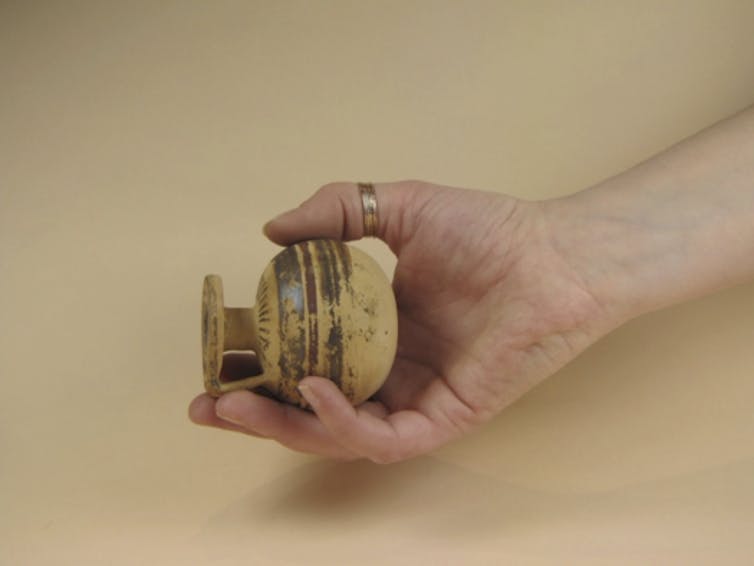
An X-ray photograph shows that the inside of the belly is occupied by nodules of various sizes and shapes. Observed with the naked eye and a binocular magnifying glass, it appears that each nodule is made of the same hard, brittle, light-brown to black-brown material, composed of a succession of tiny superimposed layers (of the order of 0.1 mm). Electron microscopy revealed that it is kaolinite. The very fine kaolin powder, mixed with perfumed oils, made it possible to obtain a creamy cream. Over time, inside the tomb, the organic components of the perfumed cream degraded while the mineral matter solidified in the form of very fine strata that were deposited and superimposed at the bottom of the vase.
We can see to what extent the olfactory and material reality (consistency, color) of ancient perfumes was thus different from that of today's perfumes.
Indeed, unlike contemporary perfumes, the principle of antique perfumes was based on the mymesis of nature, i.e. the capture and conservation of floral and shrub exhalations. It is not only pleasant fragrances that were sought, but smells that mark the presence of the sacred or act by their therapeutic and prophylactic power.
The quality and function of a perfume depended on the plant materials used, their symbolic value, their ritual use and their magical-medicinal dimension.
Watch "Les parfums à l'époque archaïque"; filmed lecture by the author at the Collège de France, first and part two.
Dominic Brother, Professor of Archaeology and History of the Western Mediterranean, University of Southern Brittany
Header image: Vials found in excavations in Pompeii
This article was originally published on The Conversation. Read the original article.
![]()

